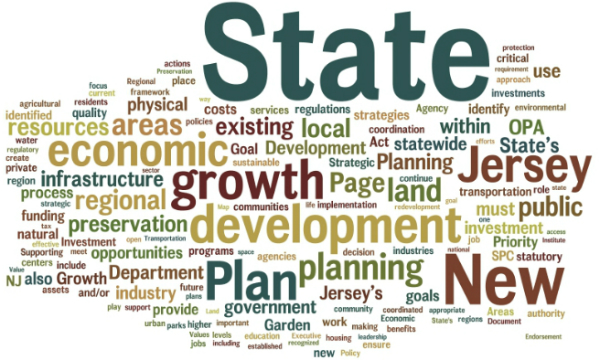New Jersey Future Blog
Less Housing, Higher Prices
March 18th, 2004 by Tim Evans
- The prices of existing homes across New Jersey have risen rapidly in the last two years.
- The median sales price for existing homes rose by at least 25 percent between 2001 and 2003 in all of New Jersey’s eight metropolitan areas except for the Wilmington, DE metropolitan area, which includes Salem County; even here the increase was 22 percent. (Source: National Association of Realtors)
- One cause of the price increase is that demand is growing faster than supply. From 1990 to 2000, the number of housing units in New Jersey increased by 235,000, while the number of new households increased by 270,000, a difference of 35,000.
MASSACHUSETTS SEEKS NEW HOUSING ANSWERS
Casual observers of suburban towns might be surprised to learn there is a housing shortage. An all too common sight is larger and larger houses growing on larger and larger lots, with the acquiescence of local officials who have correctly concluded that one large house on a very large lot is likely to produce fewer costly school children than modest houses (or, certainly apartments!) on smaller lots. So while each municipality makes an individually rational choice, the collective economic, environmental and social costs rise from the lack of housing that is affordable to a wide range of people.
New Jersey is not the only state that is facing a housing crunch. In a recent poll in Massachusetts, 25 percent of the respondents expressed a desire to relocate to a less expensive area. In a state that prides itself on being the home of the young, creative and entrepreneurial class, Massachusetts now struggles with the realization that an increasing number of young scientists, engineers, doctors and business people are seeking jobs in regions where the cost of housing is lower.
A diverse group of Massachusetts’s business leaders and civic activists are promoting a set of policies that should have some resonance in New Jersey. They have proposed the state provide a set of financial and other incentives to local communities that adopt a Smart Growth Overlay Zoning District. Such zoning would allow the building of single-family homes on smaller lots and the construction of apartments for families at all income levels.
The biggest proposed incentive is the state assumption of 100 percent of the cost of providing a public education for each additional child. There are many bells and whistles built into this proposal including affordable housing requirements, design standards, density targets and historic preservation requirements which would ensure the new incentives foster smart growth, not sprawl.
New Jersey would do well to consider similar incentives in addressing its housing shortage. Housing affordability is not only an issue for New Jersey families; it is a cornerstone of the state’s economic prosperity.
















